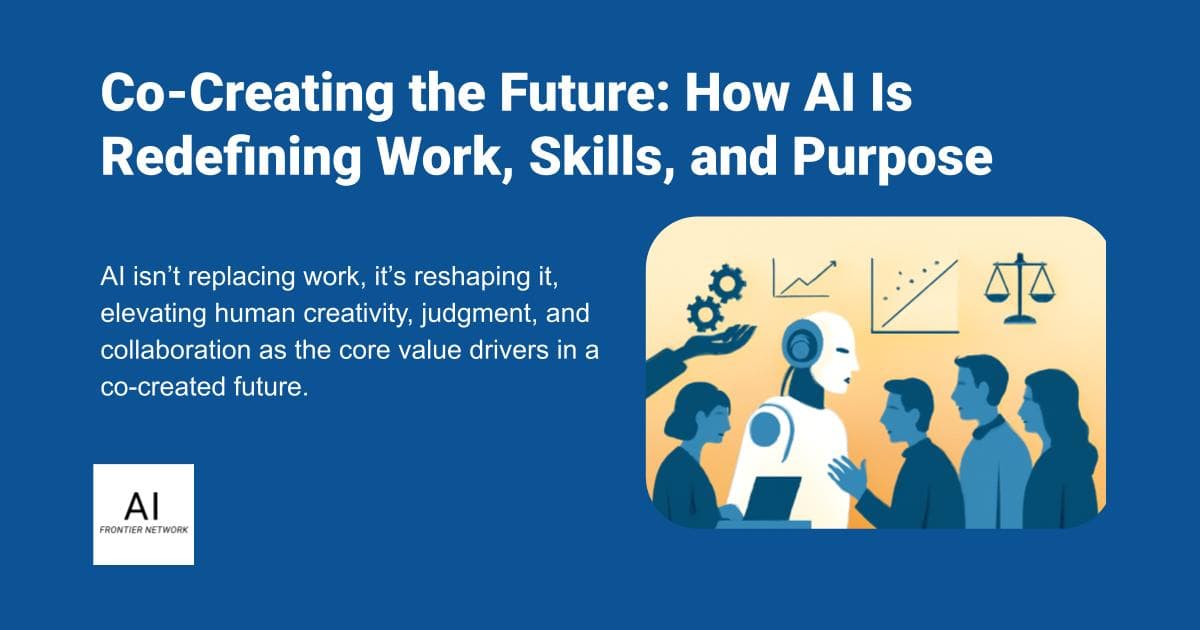Artificial Intelligence is no longer just a backend automation tool; it’s becoming a collaborator, a strategist, and a catalyst for redefining the very nature of work. As these thought leaders reveal, AI is not just changing tasks, it’s reshaping what work means, who does it, and how we create value in the modern enterprise.
From Specialization to Synthesis
Traditional job roles, once built on predictable, siloed tasks, are being atomized and recombined. As Rajesh Sura notes, AI is triggering a profound unbundling of labor: “Tasks once siloed into specialized functions are being atomized, automated, and reassembled.”
This has led to the emergence of hybrid, fluid roles that blend creativity, judgment, ethics, and collaboration with intelligent systems. Nivedan Suresh points out that engineers are now evolving into systems thinkers—roles like prompt engineers, AI ops, and model oversight specialists didn’t exist five years ago, but are critical today.
Devendra Singh Parmar reframes this transformation not as job loss but as job redefinition: “AI won’t just optimize workflows; it will push us to reimagine what it means to contribute.”
The Human Skill Renaissance
If AI is the engine of automation, human skills are the steering wheel. Across insights, there’s one constant: as machines handle routine, human uniqueness becomes premium.
Sanath Chilakala notes that routine capabilities like data entry and summarization are declining, while complex judgment, creativity, and adaptability are rising in value. Mohammad Syed makes it plain: “AI can’t replicate your creativity, your judgment, or your ability to connect human-to-human.”
This new skillset goes far beyond technical literacy. It includes:
- Ethical reasoning and digital discernment
- Emotional intelligence and empathy
- Human-centered design and interdisciplinary problem-solving
Nikhil Kassetty calls this the shift from routine to resonance, where meaningful work increasingly requires the kind of soft, interpretive skills AI can’t emulate.
AI as a Co-Pilot, Not a Watchdog
Perhaps the most urgent cultural shift is around trust. When AI is implemented without transparency or worker involvement, it becomes a threat. When it’s framed as a teammate, it becomes a tool of empowerment.
As Mohammad Syed observes, “If people feel like AI is watching over them, not working with them, you lose trust fast.” The antidote? Transparency. Explainability. Human agency.
Gayatri Tavva suggests forming employee-led AI implementation committees to foster engagement and reduce resistance. Srinivas Chippagiri adds that building trust in AI means designing it with clear feedback loops, human-in-the-loop safeguards, and shared decision-making.
New Roles, New Norms, New Value
While automation may displace certain functions, it’s simultaneously creating a wave of entirely new career paths. Many of these roles didn’t exist even a few years ago:
- AI ethicists and prompt engineers
- Model evaluators and human-in-the-loop trainers
- AI scribes in healthcare and AI compliance agents in finance
- Algorithmic traders, curriculum intelligence designers, and personalized retail strategists
As Hina Gandhi and Ram Kumar Nimmakayala both emphasize, AI is augmenting—not erasing—roles. It’s freeing humans from repetition and repositioning them for higher empathy, insight, and creativity.
As Jarrod Teo highlights through the case of unmanned AI-powered stores in South Korea, AI can be a platform for internal redeployment, not layoffs, if leadership values reskilling and redeployment as a long-term talent strategy.
From Upskilling to Re-skilling with Purpose
Reskilling isn’t just a checkbox. It’s a strategic reset. Rajesh Sura warns that the next generation of talent strategies must go beyond teaching prompt engineering or ML basics. They must include judgment, ethics, systems thinking, and contextual reasoning.
Anil Pantangi shares that many forward-thinking companies are no longer seeing AI education as technical training, but as cross-functional leadership development. True AI literacy isn’t just knowing how to use tools—it’s knowing how to design workflows that co-create with AI.
Sanath Chilakala points to staggering trends: AI-related roles are growing by 448%, while non-AI IT roles are shrinking. Companies that hesitate to re-skill their talent risk falling behind, not because AI replaces people, but because it empowers those who embrace it.
Ethics, Belonging, and Strategic Transparency
The most visionary leaders in this space understand that ethical guardrails and cultural belonging are non-negotiables. Devendra Singh Parmar reminds us that AI doesn’t absolve responsibility; it amplifies it. From bias audits to explainability standards, ethics must be embedded at every layer of the AI lifecycle.
And as Gayatri Tavva stresses, organizations must not only address technical skill gaps but also the emotional and psychological impact of AI transitions, especially among mid-career professionals.
Reimagining Purpose in the AI Era
At its core, this conversation isn’t just about productivity—it’s about purpose.
As Rajesh Sura asks, “What kind of work is truly worth doing in a world where machines can do more?” The answer, echoed by so many contributors, is work that is ethical, creative, human-centric, and impact-driven.
Pratik Badri underscores this deeper shift:
“AI isn’t simply automating tasks—it’s reconstructing the fundamental blueprint of work. The ultimate question isn’t ‘what can AI do?’ but ‘what should humans do best?’”
He adds that this moment demands a redefinition of roles, where professionals evolve from task executors to strategic partners, and where leaders transition from skill-based hiring to cultivating learning ecosystems. The future, he emphasizes, belongs to synthesis thinkers—those who can navigate the intersection of technology, business strategy, and human needs.
By allowing AI to handle the routine, we unlock human capacity to create, connect, and contribute—to elevate both output and meaning. This isn’t just workforce evolution. It’s workforce liberation.
Conclusion: Work, Rewritten
The future of work isn’t fully automated. It’s co-created.
As these voices show, thriving in the age of AI requires a paradigm shift: from rigid specialization to flexible synthesis, from technical know-how to ethical fluency, from top-down control to human-machine collaboration.
The organizations that succeed won’t be those with the best AI tools, but those that pair them with the most resilient, adaptive, and purpose-driven people.
Because the real transformation isn’t about what AI does for us.
It’s about the transformation we undergo when we engage with AI as a partner.












